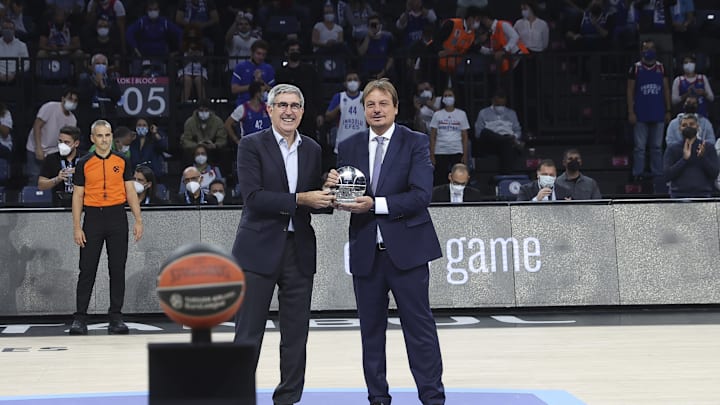If you watched the 2023 FIBA World Cup, you may have noticed something. It was rarely, if ever, mentioned if a player played in EuroLeague or what team he played for. For the most part, where players played professionally was not mentioned, but NBA players and their respective teams were flagged on a somewhat regular cadence.
This could have been intentional. While it might be assumed that the two organizations are not only associates but also synonymous, quite the opposite is true. The two organizations are completely separated from one another, and you could even call them rivals.
What happened between EuroLeague and FIBA?
The two organizations did start together, with FIBA creating the European Champions Cup in 1958 which eventually became the FIBA Euroleague in 1996. Euroleague operated under the FIBA umbrella until the end of the 1999-2000 season. Then, the split happened.
A group of top European teams split away from FIBA and formed EuroLeague, which they were able to do because FIBA had never trademarked the name. FIBA kept a handful of top clubs and rebranded to the FIBA SuproLeague. Olympiacos, Kinder Bologna, Real Madrid Teka, FC Barcelona, Paf Wennington Bologna, Žalgiris Kaunas, Benetton Treviso, AEK and Tau Cerámica opted for Euroleague. Panathinaikos, Maccabi Tel Aviv, CSKA Moscow, and Efes Pilsen stayed with FIBA.
For the 2000-01 season, there were two continental champions. Maccabi Tel Aviv won the FIBA SuproLeague title and Manu Ginobili's Kinder Bologna won the Euroleague championship. The model was clearly unsustainable, and EuroLeague had more big clubs and thus, more muscle.
They won the battle, and FIBA acquiesced to allowing EuroLeague to become the governing body of European club basketball competitions. This brought the birth of the modern EuroLeague and Eurocup competitions.
Why did EuroLeague clubs break away from FIBA?
The short answer is money and power. It is that simple, but the issue does also have nuances of course. Some may view EuroLeague as basketball's version of the UEFA Champions League which, to a degree, it is. It is a collection of Europe's best teams, and the winner is known as the best team in Europe for that season.
But the way teams participate is different. In the Champions League, spots are awarded based on where teams finish in their respective domestic leagues. EuroLeague does not use a qualification system, instead, it uses a licensing system.
What is a licensing system?
A licensing system means teams can essentially guarantee themselves a spot in the competition, for a price. The first license is the A-license. These are essentially the founding clubs who have a 10-year agreement to participate in EuroLeague regardless of where they finish in their domestic competition.
These clubs are Barcelona, Baskonia, Real Madrid, Olympiacos, Panathinaikos, Maccabi Tel Aviv, Anadolu Efes, Fenerbahce, Olimpia Milano, Zalgiris Kaunas, Bayern Munich, and LDLC Asvel.
There are then five wildcard teams, who are operating on a rotating annual license that they can renew at the end of each season. These five teams are Virtus Bologna, Partizan Belgrade, Crvena Zvezda Belgrade, Alba Berlin, and Valencia Basket.
The final spot is Kemba Walker's AS Monaco, who won Eurocup two seasons ago to qualify for the competition and have made the playoffs for consecutive seasons to maintain their spot in EuroLeague.
Why does EuroLeague use a licensing system?
Money. They use this system because of fiscal issues. Remember in 2021 when UEFA tried to create the European Super League (ESL) with 12 of the biggest clubs in world football? That was no different than the top basketball clubs breaking away at the turn of the century.
The reason European basketball ended up sticking with this system is because it is far from the money machine that European football is. The largest EuroLeague budget for just players and coaches' salaries for the 2022-23 season was around $20 million. Real Madrid and Barcelona reportedly both had budgets in this range. For reference, Tobias Harris makes double that annually for the Philadelphia 76ers. Kylian Mbappe makes five times that for Paris Saint Germain.
European basketball does not make a lot of money, and the most reliable way to generate the most money possible is to guarantee the top teams face each other every season. So while the licensing system may not sound like the most competitive league model, it is a necessary evil to allow club basketball to thrive in Europe.
